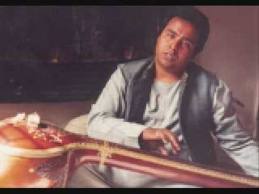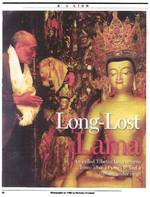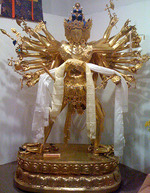His Holiness the Dalai Lama | May 2010
 Thursday, May 20, 2010 at 10:00PM
Thursday, May 20, 2010 at 10:00PM  Special Events |
Special Events |  Post a Comment |
Post a Comment |  Thursday, May 20, 2010 at 10:00PM
Thursday, May 20, 2010 at 10:00PM  Thursday, May 20, 2010 at 9:43PM
Thursday, May 20, 2010 at 9:43PM Ven Khyongla Rato Rinpoche / Time.com: Profiles of Four Tibetan Lamas-in-Exile
TODAY Show: Dalai Lama: ‘21st century will be much happier’
NY1: Dalai Lama Visits Radio City Music Hall
The New York Times: Story on Nicholas Vreeland
TTC / Columbia University June 2008: Living Peace Seminar
 Friday, June 13, 2008 at 7:30PM
Friday, June 13, 2008 at 7:30PM 
USTAD F.WASIFUDDIN DAGAR
w/MOHAN SHYAM SHARMA
Pakhawaj
Friday June 13, 2008 7:30pm
Dhrupad is the most ancient form of Indian classical music. It evolved from recitations of the Sam Veda - the Sam gaan - prayer chants that also transmitted the holy text to the next generation. Dhrupad has a well defined structural arrangement. The recitation begins with the alap – a meditative rendering of the melody without accompaniment from a percussion instrument. The alap gives the artist ample opportunity to improvise. Only a tanpura provides support to the dhrupadiya during the alap. It is followed by the dhrupad. The dhrupad is a prayer sung with rhythmic accompaniment from a pakhawaj. The pakhawaj is a two headed drum with a deep mellow sound, more suitable for the meditative nature of the dhrupad than the tabla which accompanies the khayal.
The Dagar family has dedicated themselves to the preservation of the dhrupad form. The dagarvani dhrupad has traditionally been performed as a Jugalbandi (duet). This traditional rendering of dhrupad preserves the emotional appeal while adding the richness of intricate rhythmic patterns and spontaneity. Young vocalist Ustad F. Wasifuddin Dagar continues this 20 generation unbroken tradition of the Dagar family. He is the nephew of Ustad N. Zahiruddin Dagar and son of Ustad N. Faiyazuddin Dagar, the legendary younger “Dagar Brothers”. After continuing the jugalbandi tradition with his uncle till his demise in 1994, Wasif (shorted form of his name) has successfully presented the dynamic of a duet in a solo performance by maintaining the distinct musical approaches and styles of both his father and uncle. His innovative alap notes are spacious and colorful, ranging across the three octaves delineating the personality of the raga in great clarity. Over the years he has developed subtle variations and improvisations by modulation of volume and sound application to present many shades of the same musical phrase. The composite effect of his dhrupad rendition remains traditional, merging techniques and styles of both his teachers. His is very popular with young listeners for his lively lecture demonstrations illustrating old Vedic technicalities through metaphors from daily life. Wasif has a number of recordings on cassettes and CDs including a five CD collection (Jecklin Musichaus).
He is accompanied by Mohan Shyam Sharma, one of the leading pakhawaj masters in India. He has accompanied leading vocal and instrumental masters and appeared in concerts across Europe, and the United States. He has been performing with Wasif for several years.
David Ellenbogen of WKCR 89.9FM interviews Wasif and broadcasted the Concert for Peace and Harmony to benefit The Tibet Center on his 'Raag Aur Tal' show June 29, 2008.
 Monday, September 22, 2003 at 5:29PM
Monday, September 22, 2003 at 5:29PM 
Read the article (PDF file)
 Wednesday, August 1, 2001 at 11:00AM
Wednesday, August 1, 2001 at 11:00AM  This statue of Kalachakra, Wheel of Time, was commissioned by Khyongla Rato Rinpoche with the participation of members and friends of The Tibet Center. It commemorates the bestowal of the Kalachakra initation in New York City in 1991 by His Holiness the Dalai Lama, given at the request of Richard Gere and The Tibet Center. It was sculpted by the master statue maker of the Tibetan Government in Exile, Penpa Dorjee, under the guidnce of His Holiness.
This statue of Kalachakra, Wheel of Time, was commissioned by Khyongla Rato Rinpoche with the participation of members and friends of The Tibet Center. It commemorates the bestowal of the Kalachakra initation in New York City in 1991 by His Holiness the Dalai Lama, given at the request of Richard Gere and The Tibet Center. It was sculpted by the master statue maker of the Tibetan Government in Exile, Penpa Dorjee, under the guidnce of His Holiness.